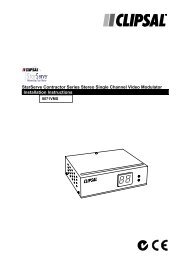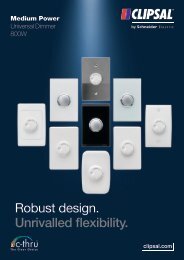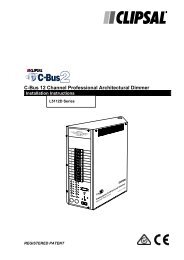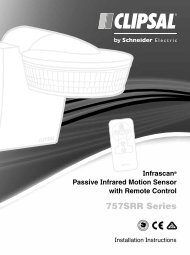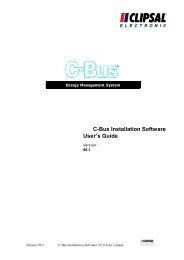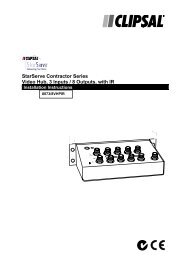6503 Building IQ Issue 5.indd - Clipsal
6503 Building IQ Issue 5.indd - Clipsal
6503 Building IQ Issue 5.indd - Clipsal
You also want an ePaper? Increase the reach of your titles
YUMPU automatically turns print PDFs into web optimized ePapers that Google loves.
FEATUREEdith Cowan University, Western AustraliaHIGH TECH LEARNINGWith today’s students arriving at university expecting luxurious surroundingsand state of the art technology, automated education facilities have becomea winning element in gaining a competitive edge over rival universities.6The last decade has seen a radical changein the higher education climate, with theintroduction of a new user-pays environment.To survive, universities have had to discoverinnovative ways to differentiate themselvesand market their facilities to potentialstudents. For many institutions, differentiationhas resulted in the construction of new anddynamic facilities to add to the allure of theircampuses.Many of these projects have beendesigned to incorporate intelligent buildingautomation systems, like <strong>Clipsal</strong>’s C-BusControl and Management System. Capableof integrating lighting, HVAC, energymanagement and security functions, campusadministrators and building designersalike, are fast realizing the benefits ofbuilding automation. In fact, with a dropin the initial installation costs bringing suchsystems within reach of many educationalinstitutions, the advantages of buildingautomation have become so impressive ithas become increasingly difficult for thetechnology to be ignored.In education facilities, these advantagesinclude significant savings in energy useand maintenance that is associated with thetechnology. For example, energy efficientapplications resulting in lower energy billscan enable the initial cost of the installationto be paid back in a matter of years.Additionally, the centralized monitoringand control of the system eliminates muchof the legwork for maintenance personneland warnings issued by the system indicatingpotential electrical faults, all but eliminate theprobability of inconvenient equipment failures.The increasing user-friendliness of suchsystems has also played an important rolein the widespread acceptance of buildingautomation. Today’s interfaces utilise Windowsbasedprograms that enable easy access toinformation without extensive training. Displayscreens have also become simpler to navigatewith text, images, sliders and clocks providingreal-time feedback on the state of differentsystem components.The portability of access via any point on thenetwork and capability of remote access, havealso been strong selling points. It is now possiblefor building operation information to be accessedvia any modem/telephone line from anywherein the world, at any time. The technology isalso capable of networking campuses andstreamlining the maintenance operations ofmulti-campus facilities. What’s more, a trendtowards the standardization of system protocolsallowing different vendors systems to talk to oneanother has also had a significant impact on theacceptance of the technology.Edith Cowan University’s, Joondalup campus inWestern Australia, is one of the country’s newgeneration universities who have embraced thebenefits automation technology can bring.In 2003, a $51 million state-of-the-artadministration and business faculty complex,known as Campus West, was constructed at thecampus. Jointly designed by Perth firm<strong>IQ</strong>



